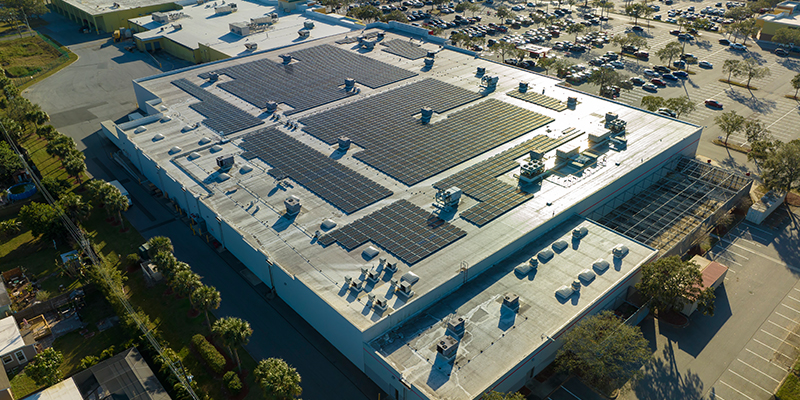As the calendar turns to 2023, what’s ahead for the commercial real estate field? We talked to several NAIOP Distinguished Fellows and Research Foundation Governors to get their forecasts for the next 12 months.
Investor Interest in Single-family Housing
Single-family rental housing is top-of-mind for Distinguished Fellow Suzanne Lanyi Charles, who chairs the Paul Rubacha Department of Real Estate at Cornell University. A sector that grew quickly after the 2008 housing crisis, single-family rentals have become a well-established asset class with publicly traded and private companies that have as many as 80,000 units, she notes.
The rapidly rising interest rates of the past year have led smaller investors to pull back, Charles says, but that creates an opportunity for the large to become larger. “I’d expect to see the largest institutional investors, those that have access to cheap capital, to use this period of high interest rates and declining home values, to grow even larger,” she says.
While some in the field questioned the staying power of larger single-family rental companies as recently as Invitation Homes’ initial public offering (IPO) in 2016, Charles believes investors no longer have such concerns. “They’ve concentrated their properties more strategically,” she says. “For commercial real estate, single-family rentals are incredibly important. This is one of the most important, I would say, asset classes.”
Larger institutional investors may face some storm clouds going forward, Charles believes, as municipalities become more attuned to constituents raising red flags about starter homes being taken out of the market. Some rental companies “may have to shift how they do business,” she says, although she adds that some states, like Georgia, have preemption laws that limit what municipalities can do to regulate the sector.
Office Market Demand and Recession Concerns
Drew Richardson, director of leasing and property management for Plano, Texas-based Primera Companies and a NAIOP Research Foundation Governor, has a number of questions and concerns about the office market and the overall economic picture going forward.
Richardson sees particularly urgent questions for “tenants that either renewed just before the pandemic, or early on during the feeling-out stages. Many companies sent employees home but are still leasing the same space,” he says. “Companies quickly realized that employees could be just as productive at home, and in some cases even more, so they have spent the last couple years gauging how much space they actually need and how to be more efficient.”
Tenants coming up for renewal will likely shift their office needs tremendously, Richardson believes, and likely shrink the number of employees who make daily trips to the office. “Amenities will be huge in retaining tenants and their employees,” he says. “Many companies will try to force people back with either incentives, or requirements.” But that could lead to turnover as employees leave for more flexible workplaces, he adds.
Richardson sees a corollary issue with regard to office construction. “Few lenders want to move forward with office construction loans at the moment,” he says. “With land prices going up, construction materials high, and the uncertainty of tenants, it’s hard to convince lenders that it’s a good idea to back office construction.”
While many consumers continue to spend money, and few seem that concerned about a recession, Richardson believes one is coming in 2023. “The Federal Reserve has said they will raise rates until people stop spending and inflation starts to fall,” he says. “I worry that we need a little more time before people really notice that your dollar isn’t going as far. I do feel the U.S. will fare better than most [countries].”
Outlooks on Interest Rates, E-commerce and Retail
Tracy Allen, vice president and corporate director of client relations at Chantilly, Virginia-based ECS Group of Companies and a NAIOP Research Foundation Governor, agrees with Richardson both that a recession is likely, and that bringing employees back to the office will remain a challenge, creating the need for benefits like floor plans optimized for teamwork, private offices, outdoor space, and on-site services like catering or childcare.
“The Fed is going to raise interest rates twice and then probably hold next year. That’s something we’re definitely thinking about in our business,” she says. To encourage people to come back to the office, Allen says her firm among other ideas has allowed employees to bring their dogs to work. “If you got a pet during COVID, you don’t have to worry about them being alone,” she says, adding that younger workers seem to have disappeared from the workplace. “Where did they go? Why won’t they come back?” she says. “How do you have collaboration if you don’t have people face-to-face?”
Allen believes that e-commerce will continue to grow from the 20% of retail sales that it currently comprises, leading to demand for more build-outs of industrial warehouse and distribution facilities. Fading Class B and Class C malls will be increasingly converted to mixed-use properties, she believes, with medical offices, storage, movie theaters, restaurants – and apartments, helping meet the need for affordable workforce and multifamily housing.
“Malls that are slowing down, they’re repurposing them, taking away the box at the end of the mall and building affordable workforce housing,” she says. “It’s not just retail anymore, it’s everything: medical, convenience, gyms, everything you would need.”
Lastly, Allen says the war in Ukraine, sanctions on Russia and continuing supply-chain issues will continue to be in the backdrop in 2023, and she doesn’t necessarily see issues like high prices for gas and food easing dramatically.
Inflation, Financing and Climate Risk Reporting
Energy-driven inflation has cooled a bit, but whether that will continue is an open question, partly given that the recently lifted “zero COVID” policy in China had contributed to reduced energy demand, says Spenser Robinson, professor and director of real estate at Central Michigan University.
“Inflation, for real estate, has two potentially counteractive effects,” he says. “Cap rate consists of R [required return] less G [growth rate]. In an increasing interest-rate environment, we will see a higher R, which leads to an increased cap rate. On the other hand, we expect inflationary growth in the rent of those assets, leading to an increase in G, which reduces cap rate. As other economic factors increase in costs, so does rent. The question for next year is, what is the balance of R and G, and how does that impact commercial real estate?”
Related to that is a concern about financing, Robinson says. “If you are on long-term debt, you’re fine,” he says. “Properties with debt maturing might not be able to refinance at market interest rates. If you’re a merchant-builder, as your construction loan matures, it might be difficult to right-size your debt in the current environment. This will likely create some distressed assets.”
Another major issue that publicly traded commercial real estate companies will face probably by the end of the first quarter of 2023 is the pending Securities & Exchange Commission rule related to climate risk reporting, Robinson says.
“There’s been lots of debate among various industries,” he says. “The costs – in terms of organizational learning, external consultants, and compliance costs – are being underestimated by a lot of folks at this point. Getting in compliance with the SEC rule, which ultimately will affect almost every large owner-operator, is a huge trend that we’re going to see a lot of information coming out about in the next 12 to 18 months.”
An emerging trend has been limitations placed on the redemption of large funds, including companies like BlackRock limiting cash redemption in large real estate funds, Robinson says. “The challenge is liquidity,” he says. “If everyone cashes out, there’s not enough money to support assets. … What is the spillover effect of the liquidity constraint on asset values? How much do people pull out, how much can firms contractually limit, and does that force asset sales into an illiquid market?”








